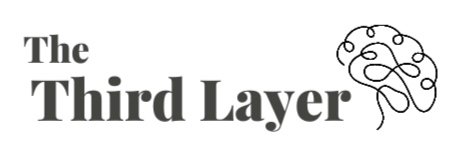Rhythm, entrainment, intuition, and creativity
I took a drumming class yesterday. And I would 96.4% guarantee that my brain is more creative today.
The past decade of research has clinched it, humans can sync with each other’s brain waves as well as heart beats when they’re engaging with each other in a variety of tasks — watching live theatre, sleeping, and, of course, loving one another. Drumming is probably one of the most simple, obvious and most studied examples.
When I was in college, I took a half-dozen dance classes, several with live drummers. I’d loved my experiences so much that for the Lonely Planet book Calm: Secrets to Serenity from Cultures Around the World, I wrote about drumming.
We’re years away from fully understanding how our brain and body is connected to creativity. The research is literally just coming out this week about how our brains use rhythm to predict the future. But this is my blog, so I get to write whatever I want; whee!
The future of thinking is anticipating
My guess is that drumming is so great for creativity because it scratches both anticipatory itches. For instance, this study says the brain predicts in two ways: 1) anticipation based on past experiences, and 2) anticipation based on the identification of rhythmic patterns. I.e., you know what is about to happen because a) you’ve heard music before and b) your brain is entrained to these patterns. Also known as, you know, intuition.
Future-prediction (intuition) is one of the most key factors of creativity. Any time we’re in an anticipatory mindset, that means we’re practicing skills needed for more creativity or easier problem-solving.
Find the sweet spot
A good half of my work with students and clients is helping them find the sweet spot where creativity thrives. When I was in the drumming class yesterday, I watched my mind go from focused (i.e., anticipating the future) to wandering (not focused, not anticipating the future) or over-thinking (anticipating the future too much). Every time I strayed to wandering or over-thinking, I’d lose the rhythm.
I would notice right away, of course, and try to turn the volume down. I’d look for that sweet middle spot again — focused and anticipating but in an open, listening way — and slowly get back to the rhythm of the class through entrainment. As a lay researcher of creativity for 25 years, I can’t think of one other exercise I’d suggest that’s as easy and quick (and physical!) for tapping into that intuitive/anticipatory magic spot in the brain more than entrainment in a drumming class. And we haven’t even gotten started on collaboration!
The definition of entrainment is to draw along with or after oneself (Merriam-Webster) or the process of making something have the same pattern or rhythm as something else (Cambridge). It’s also used quite a bit in science, with fluids entraining other fluids, for example. You know those two dudes dancing wildly at concerts, seemingly to their own rhythm? If they suddenly start dancing like synchronized swimmers, that would be entrainment. Hardcore entrainment (a great punk band name?), but entrainment nevertheless (ooh, an even better punk band name). Just like in musical improv, we use this concept in theatrical improv pretty much constantly, as you can imagine.
One study is even looking into the magic of entrainment to help folks with neurological issues like Parkinson’s:
Motor control theory and motor neurophysiology propose that changes in motor patterns are due to priming of the motor system and anticipatory rhythmic templates in the brain that allow for optimal anticipation, motor planning, and execution with an external rhythmic cue. [Emphasis my own]
Optimal Anticipation
This is it. This is what you’re looking for. If you want to improve your intuition and insight — and thus your creativity — find a way to improve your ‘optimal anticipation’. Put on a classical music piece you’ve never heard and start air-conducting, practicing ‘optimal anticipation’ as you wave your hands. Or drum. From my new favorite study — Neurobiological foundations of neurologic music therapy: rhythmic entrainment and the motor system — music, drumming and rhythm are especially profound for this type of brain-training because:
The auditory system is superbly constructed to detect temporal patterns in auditory signals with extreme precision and speed, as required by the nature of sound as only existing in temporal vibration patterns (Moore, 2003). In those tasks, the auditory system is faster and more precise than the visual and tactile systems (Shelton and Kumar, 2010).
There are other ways to practice this, but the research is so new it’s not conclusive yet. For instance, researchers have looked at whether binaural beats can affect our creativity (A: yes they can, but it’s highly personalized). I tried a binaural beat app, and it just annoyed the crap out of me. It was maybe set to the wrong frequency for my brain.
But maybe, one day, I’ll go to a creativity doctor (ohmygod I have my future job picked out!), who will assess my fitness tracker measurements, my Heart Rate Variable monitor, my home-performed EEG and EKGs, and give me a prescription for more … oh, god, I have to say it: for more cowbell.
If you want to sign up for coaching or a discovery session, go to our scheduling page.


